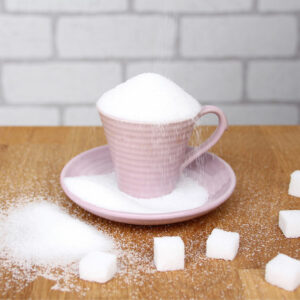Achieving Healthy Skin – Top 10 Skincare Myths Debunked

Many people wish for healthy and glowing skin. However, achieving this goal is easier said than done. It requires effort, time, and money. Furthermore, today one will find the Internet filled with skincare tips and a few myths that can cause more harm than good. These myths can unnecessarily complicate one’s beauty regimen and, in some cases, even cause harm to one’s health. Keep reading to know more about these skincare myths.
Popular skincare myths debunked
Here are a few common skincare myths:
- Tight skin after cleansing equals clean skin
Most people believe that the tightness of their skin after cleansing their face means clean skin. However, this skincare myth is far from the truth. This sensation of dryness is a negative sign. It indicates that the skin has been stripped of the necessary moisture and nutrients that are needed to keep it healthy and glowing. Furthermore, using common soaps can disrupt the pH level of the skin, leading to disruption of the skin barrier and skin damage. Hence, as an alternative, experts recommend using oil-based cleansers to keep the skin supple. - The order of skincare products does not matter
Although most people use several skincare products, such as cleansers, moisturizers, and toners, every day, sometimes they use them in the wrong order. This happens when people believe skincare myths that imply that their skincare products’ order does not matter. Even though improper usage of the products may not cause much harm, not using them in the right order will result in inadequate absorption of the products by the skin. This can cause the skincare products to not do their job efficiently. Hence, as a general rule, one must use products from the thinnest to the thickest. This allows moisture to be sealed in and keeps the skin hydrated. - Oily skin does not need moisturizers
If an individual has oily skin, they might skip applying moisturizer, as their skin is already slick, has better skin preservation, and has fewer wrinkles. However, all skin types, including oily skin, can get dehydrated if not cared for properly. Furthermore, to counter dehydration, the body may release excessive amounts of oil, leading to discomfort. Hence, it is recommended that people with oily skin use hyaluronic acid-based moisturizers once a day regularly to avoid the overproduction of oil, clogged pores, acne, and blackheads. - Dark-skinned people do not need sunscreens
Although dark-skinned people are not that prone to sunburns, they are not immune to them. Moreover, too much time spent in the sun without proper protection can cause multiple issues, such as melasma and hyperpigmentation. Hence, one must be wary of this skincare myth. As a safety precaution, one should apply sunscreen regularly and then reapply it every couple of hours, regardless of how light or dark their skin is. This can help one prevent the effect of the harmful UV rays of the sun and steer clear of complications, such as skin cancer. - Pores can open and close
Pores in the body do not open and close. Instead, they dilate or stretch out to release oils, toxins, and sweat. This dilation of the skin pores can be affected by various factors, such as age and temperature. Additionally, pores can also get clogged by dirt and oil, making them appear more prominent or larger. So, instead of believing in this skincare myth, one must regularly exfoliate the skin to unclog the pores. In addition to the above, experts recommend the use of makeup products that do not clog the pores and urge people to be extremely gentle with the skin. - Lips do not need SPF
Most people with a regular skincare routine end up ignoring one of the most important parts of the face, i.e., the lips. This commonly ignored part of the face is as susceptible to burns as the rest of the skin. Hence, it’s important to not just use common lip balms to protect the lips from dryness but also an SPF lip balm just before stepping outside. Furthermore, one can keep the product in their bag or pockets for easy access and reapply the coating whenever necessary. In addition, sunscreens must also be applied to the ears, neck, and around the eyes for all-around protection against the harmful rays of the sun. - Acne results from improper face cleansing
One of the most popular skincare myths is that this statement is completely false. One cannot get acne due to improper or unregular cleansing of the face. Instead, one must keep in mind that acne develops due to the combination of four important factors: clogged pores, bacteria, inflammation, and sebum, an oily substance that protects the skin against dryness. So, one must not believe that not washing the face is the sole reason behind the development of acne. Instead, they can take steps to stop acne breakouts. This can include gently washing the face twice a day after sweating and avoiding tanning beds and the sun as much as possible. - Skin aging is completely based on genetics
Skin aging is an extremely complex process that has taken place over the years. While genetics play a role in the process, many intrinsic and extrinsic factors usually determine the skin’s ages through the years. For instance, an individual with the habit of regularly squinting can develop signs of aging faster than others in their age group. Furthermore, one must consider many external factors, such as sun exposure, healthy food consumption, and stress. - Dark circles indicate tiredness
While tiredness and lack of sleep can worsen dark circles, they are not the sole causes of the problem. In most cases, dark circles result from dryness, genetics, aging, and extra pigmentation. - Eye creams must be kept in the fridge
Although cold temperatures can help reduce the puffiness under the eyes, refrigerating eye creams may not prove much beneficial. As the human body’s natural temperature is 98.6 degrees, when cold creams are applied, the body automatically warms them up.



